Sangiovese and Cabernet Sauvignon, both renowned red wine grapes, boast unique histories, characteristics, and cultivation processes. While Sangiovese hails from the rolling hills of Italy’s Tuscany region, Cabernet Sauvignon is a true global citizen, with origin stories in France’s Bordeaux and a prominent presence in the vineyards of Napa Valley.
A deeper dive into the flavor profiles, winemaking techniques, and food pairings of both Sangiovese and Cabernet Sauvignon reveal the distinct differences between the two. Each grape’s unique attributes make them ideal for pairing with particular dishes, and the sheer variety of popular blends lets wine enthusiasts find a version that suits their preferences.
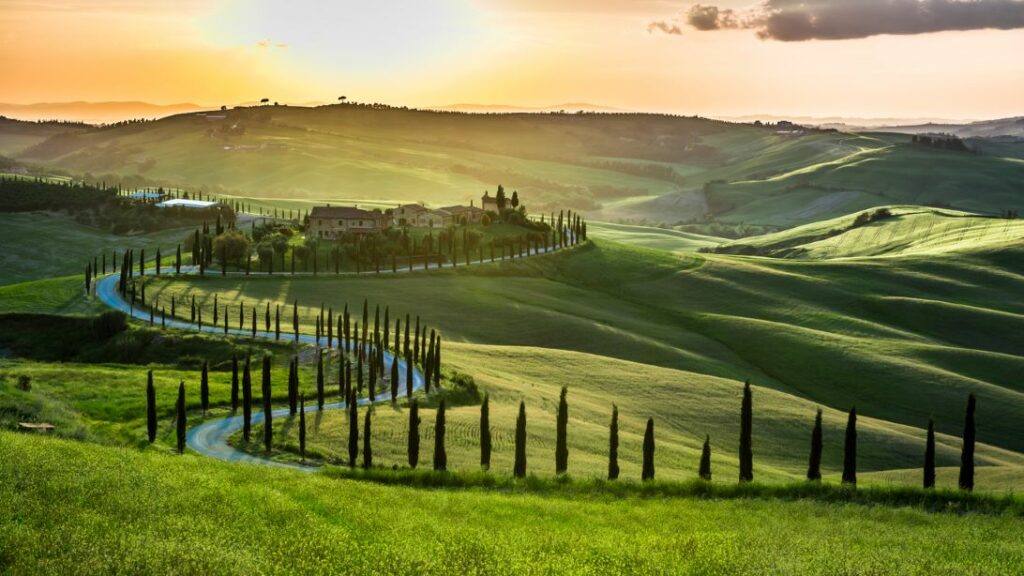
Key Takeaways
- Sangiovese and Cabernet Sauvignon grapes have distinct histories and cultivation processes.
- Both grapes have unique flavor profiles, winemaking techniques, and food pairings.
- The vast range of popular blends allows wine lovers to choose according to their preferences.
Origin and History
Sangiovese
Sangiovese is an Italian red grape variety that is predominantly grown in the central regions of Italy, particularly Tuscany. Its name derives from the Latin words “Sanguis Jovis,” which means “the blood of Jupiter.” The origins of Sangiovese can be traced back to the Etruscan civilization around the 7th century B.C. It was not until the 16th century that Sangiovese gained prominence in written records. Sangiovese is the principal grape for several renowned Italian wines, such as Chianti, Vino Nobile di Montepulciano, and Brunello di Montalcino.
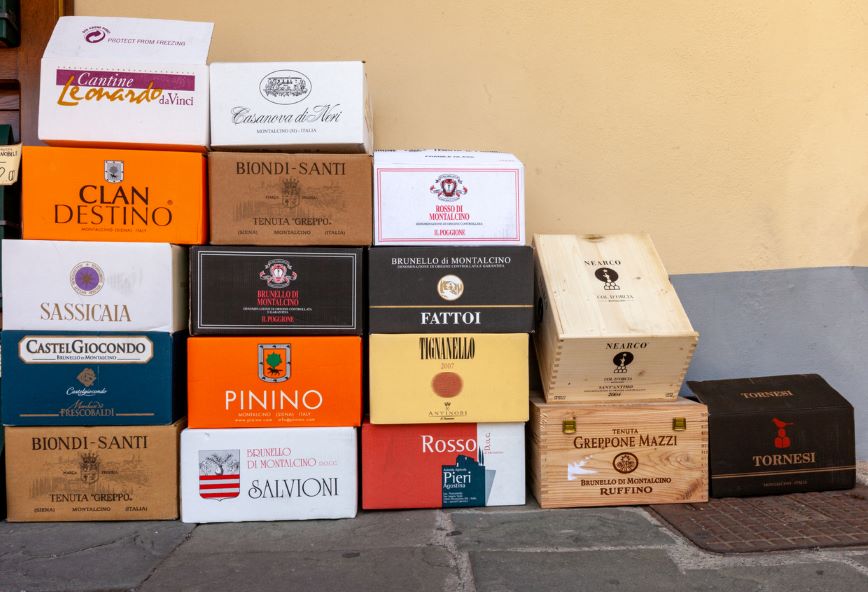
Cabernet Sauvignon
Cabernet Sauvignon is a popular red grape variety that originated in the Bordeaux region of France. It is a relatively young grape, resulting from a cross between Cabernet Franc and Sauvignon Blanc in the 17th century. The name “Cabernet Sauvignon” is derived from its parent grapes and means “wild small berry.” The grape has since spread worldwide and has become a staple in many New World winemaking regions. Cabernet Sauvignon is known for its robust flavors, structure, and aging potential, making it a cornerstone grape for several renowned wine regions, including Napa Valley in California and Bordeaux in France.

Vineyard Cultivation
Sangiovese
Sangiovese is a grape variety originating from Italy, specifically from the Tuscany region. It is the main component in well-known wines like Chianti and Brunello di Montalcino. The grape thrives in warm, temperate climates with moderate rainfall and well-drained soils, particularly those rich in limestone and clay.
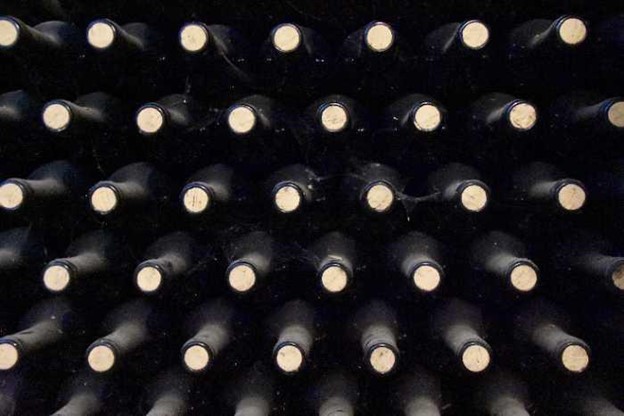
Cultivating Sangiovese requires attentive vineyard management, as it is prone to diseases and rot due to its thin skin. The grape is sensitive to temperature variations, with late frosts or hot summers impacting the quality of the crop. Proper vine training techniques, such as the use of trellises, can optimize sun exposure and air circulation.
Cabernet Sauvignon
Cabernet Sauvignon is a popular grape variety famous for its powerful, full-bodied red wines. It originates from the Bordeaux region of France but has successfully spread worldwide, thanks to its ability to adapt to various climates and soils. The grape thrives in well-draining gravelly or rocky soils, with warm, temperate climates and moderate rainfall.
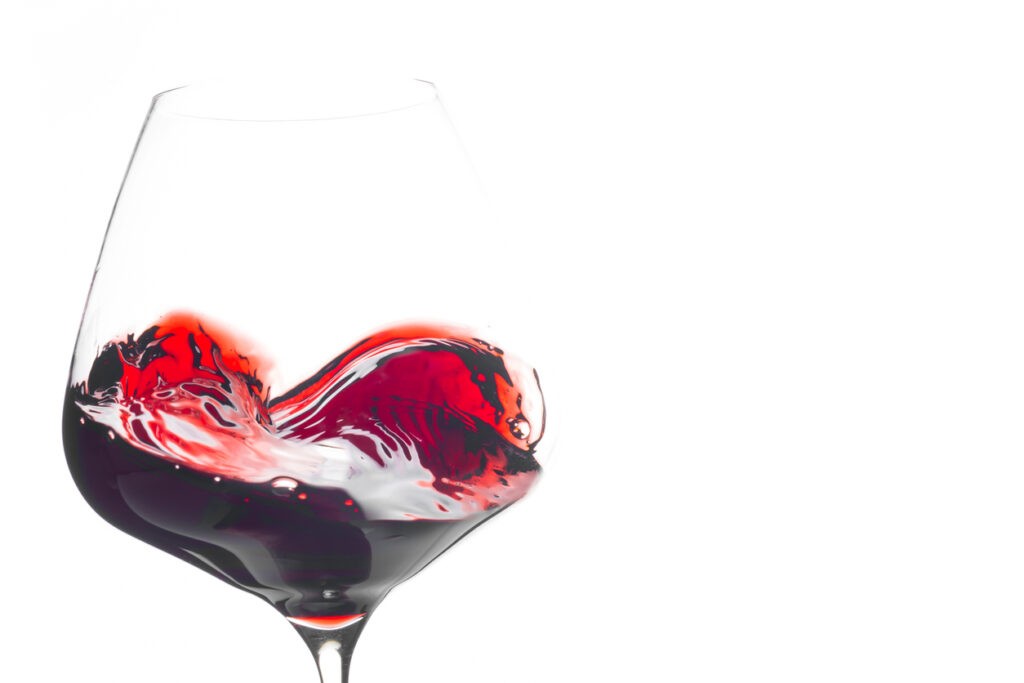
Cabernet Sauvignon vines are relatively low maintenance, possessing thicker skin and high resistance to disease and pests compared to other varieties like Sangiovese. However, the vines can be prone to veraison, where berries in a single bunch ripen unevenly. This can be mitigated through proper canopy management, which ensures adequate sunlight penetration and air circulation.
Both Sangiovese and Cabernet Sauvignon are cultivated using various vineyard techniques such as the use of trellises and canopy management. These methods are crucial in producing high-quality grapes and, consequently, exceptional wines.
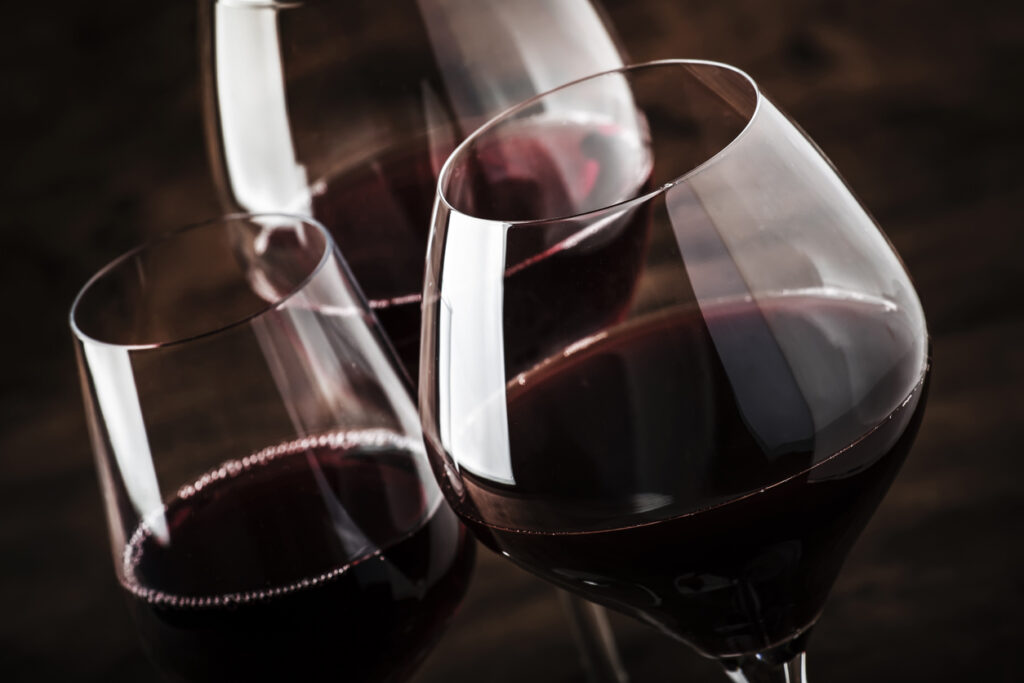
Wine Characteristics
Sangiovese
Sangiovese is a red grape variety native to Italy, predominantly grown in the Tuscany region. It is the main component in the production of famous wines such as Chianti and Brunello di Montalcino. Sangiovese wines have the following characteristics:
- Color: Medium to deep ruby red, often with a garnet rim developing as the wine ages.
- Aroma: A distinctive aroma of red fruit, such as cherries and red plums, along with herbal notes, like dried oregano or rosemary.
- Acidity: Typically high acidity, which contributes to the wine’s freshness and ability to age well.
- Tannins: Medium to high tannins, providing structure and balance.
- Body: Generally medium-bodied, but can vary based on the winemaking techniques used.
- Flavors: Primarily red fruit flavors, with a subtle hint of earthiness and spice.

Some popular styles of Sangiovese include:
- Chianti: High acidity and tannin content combined with tart cherry and herbal flavors.
- Brunello di Montalcino: Richer and fruitier with a fuller body, displaying notes of black cherry and plum.
Cabernet Sauvignon
Cabernet Sauvignon is a globally renowned red grape variety originating from the Bordeaux region of France. It is now extensively grown in multiple wine regions around the world, most notably in California, Australia, and Chile. Cabernet Sauvignon wines display these characteristics:
- Color: Deep, opaque ruby red, sometimes with a hint of purple.
- Aroma: A mix of dark fruit and savory notes, such as blackcurrant, blackberry, pencil shavings, and green bell pepper.
- Acidity: Moderate acidity, contributing to overall balance and freshness.
- Tannins: High tannins, making the wines suitable for long-term aging and improving their structure.
- Body: Generally full-bodied, with a rich and powerful mouthfeel.
- Flavors: Dominated by black fruits, like blackcurrant, black cherry, and blackberry; accompanied by secondary flavors like tobacco, cedar, and dark chocolate.

Some well-known styles of Cabernet Sauvignon include:
- Bordeaux: A blend with other grapes like Merlot and Cabernet Franc, offering a more balanced and restrained style with earthy, mineral notes.
- Napa Valley: Riper and more opulent fruit flavors, with lush, velvety tannins and a touch of mint or eucalyptus.
Pairing with Food
Sangiovese
Sangiovese, a versatile and food-friendly red wine, pairs remarkably well with a variety of dishes. The wine’s high acidity and medium tannins complement tomato-based dishes, enhancing the richness and depth of flavors. Some classic pairings include:
- Pasta with tomato-based sauces: The wine’s acidity balances the tangy tomato flavor.
- Pizza: Sangiovese’s earthy notes work well with the hearty and flavorful toppings.
- Roasted or grilled meats: The wine’s tannins help break down proteins, creating a pleasant harmony between the wine and the meat.

For an elevated gastronomic experience, pair Sangiovese with dishes featuring herbs like rosemary, sage, or thyme, as they echo the wine’s herbal nuances.
Cabernet Sauvignon
Cabernet Sauvignon, known for its full-body and robust flavors, is an excellent partner to hearty and rich dishes. The wine’s pronounced tannins and bold fruit notes hold their own against strong flavors in various foods. Some popular pairings are:
- Steak and beef dishes: The boldness of Cabernet Sauvignon makes it a perfect match for grilled or seared steaks, braised beef, or dishes with rich, meaty sauces.
- Lamb: The gamey taste of lamb complements the wine’s dark fruit flavors and earthy undertones.
- Aged cheeses: Aged cheddar, gouda, and blue cheese can enhance Cabernet Sauvignon’s depth and structure.
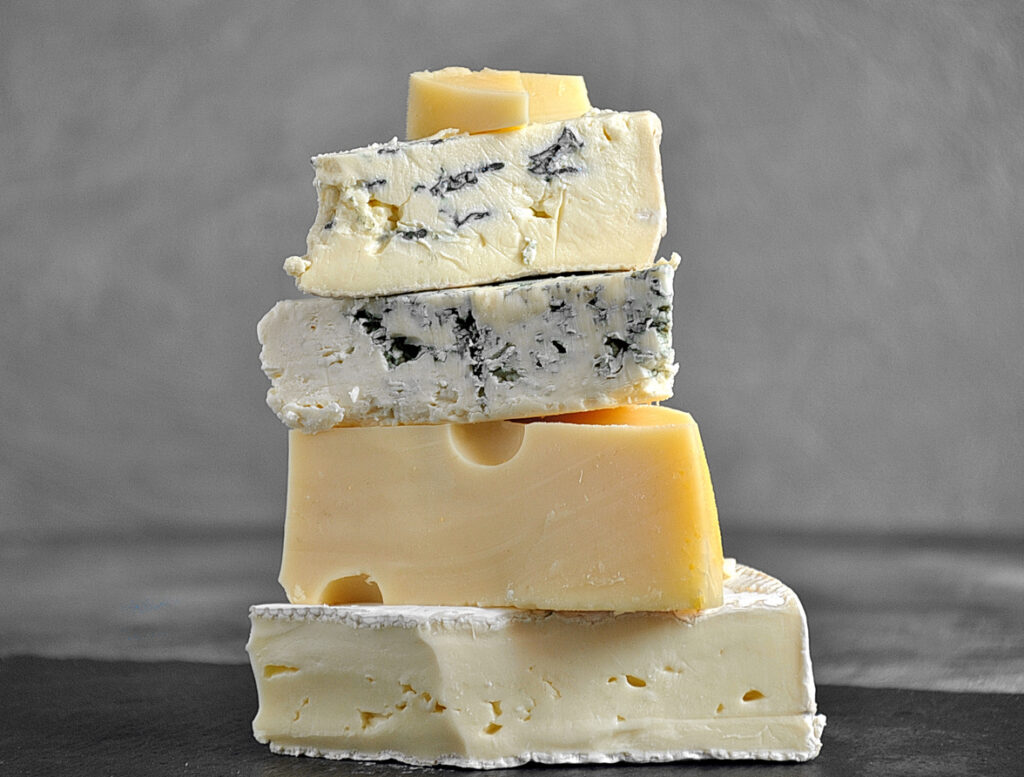
Pairing Cabernet Sauvignon with dishes featuring mushrooms or dark, leafy greens can accentuate the wine’s earthy complexity and add balance to the overall dining experience.
Popular Varieties
Sangiovese
Sangiovese is a red grape variety primarily grown in Italy, where it is the most widely planted grape and the main component of Chianti, Vino Nobile di Montepulciano, and Brunello di Montalcino wines. It is known for its bright red fruits, such as cherry and raspberry, as well as earthy notes and fresh acidity.
There are several notable styles of Sangiovese, which can be broken down into two main groups:
- Traditional Sangiovese: This style is characterized by its lighter body, higher acidity, and lower tannins. It often features flavors of sour cherry, tomato leaf, and herbs.
- Modern Sangiovese: This style, which has become more popular in recent years, tends to be richer, with more intense fruit flavors and softened tannins. It often has flavors of plum, black cherry, and spices.

Cabernet Sauvignon
Cabernet Sauvignon is a red grape variety that originated in Bordeaux, France, and is now grown in wine regions all over the world, such as Napa Valley in the United States, Coonawarra in Australia, and Maipo Valley in Chile. Known for its deep color and full body, it is often blended with other grape varieties, like Merlot or Cabernet Franc.
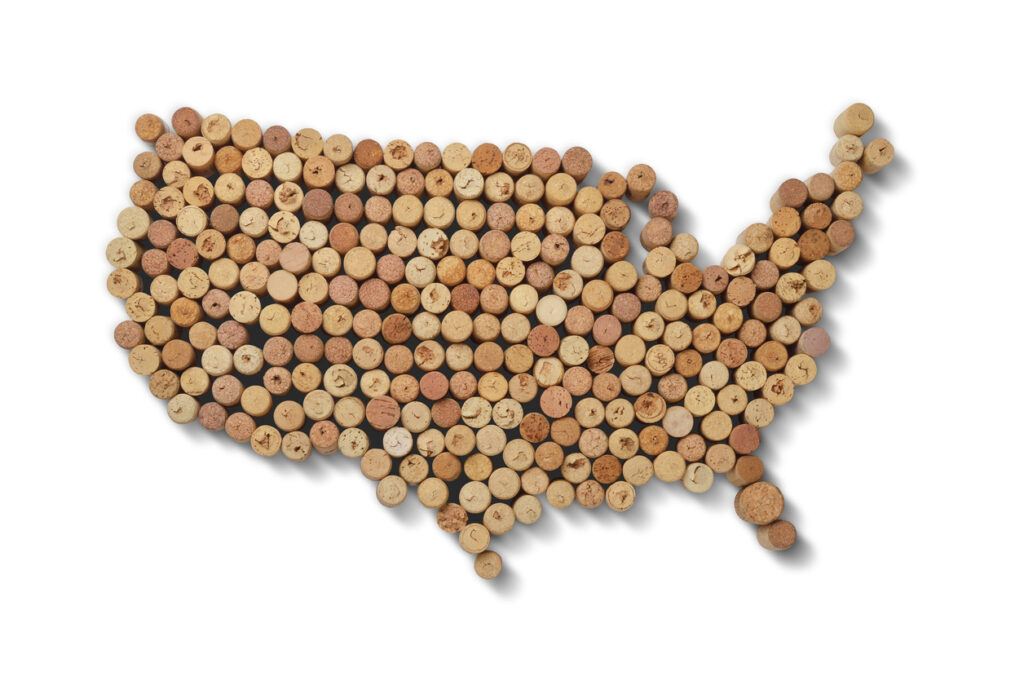
Cabernet Sauvignon is characterized by bold flavors and high tannins, which make it suitable for aging. The flavors in these wines can vary greatly depending on the region, but some common tasting notes include:
- Mature Cabernet Sauvignon: Often features blackcurrant, black cherry, and plum, as well as notes of cedar, tobacco, and graphite.
- Young Cabernet Sauvignon: Can be more fruit-forward, with flavors of blackberry, blueberry, and raspberry, accompanied by green bell pepper and eucalyptus.
| Region | Flavor profile | Acidity |
| Old World (e.g. Bordeaux) | Earthy, more austere | Higher |
| New World (e.g. Napa Valley) | Fruit-forward, more opulent | Lower |

Conclusion
Sangiovese and Cabernet Sauvignon are both well-regarded grape varieties, each offering distinct characteristics in terms of flavor, aroma, and aging potential. Sangiovese, predominantly grown in Italy, is known for its medium to high acidity and savory notes. On the other hand, Cabernet Sauvignon, a more internationally recognized variety, is marked by its rich, full-bodied taste and high tannin content.
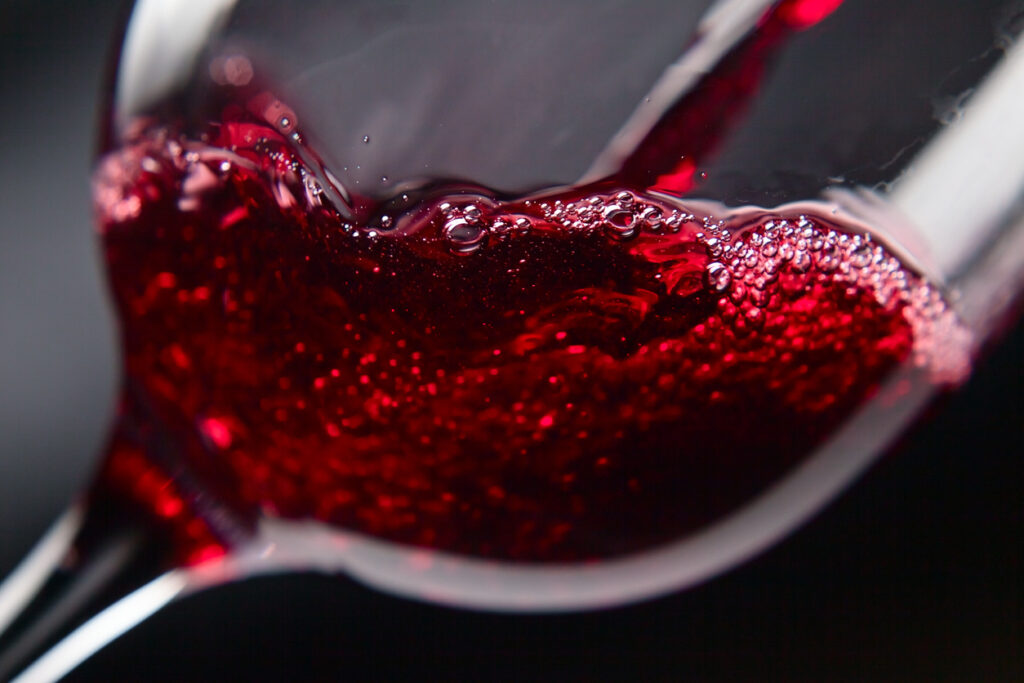
In terms of pairing with food, Sangiovese wines are traditionally matched with Italian cuisine, complementing the acidity of tomato-based dishes and the richness of hearty meats. Cabernet Sauvignon, with its bold flavors and tannins, pairs well with red meats and dishes with heavy sauces.
Both grape varieties are capable of producing high-quality wines from a wide range of price points. Affordable options are available for everyday enjoyment, while high-end labels showcase the aging potential and complexity that these varieties can achieve.
In summary, lovers of wine can appreciate the unique qualities of both Sangiovese and Cabernet Sauvignon. Whether one prefers the earthy, red fruit profile of Sangiovese or the structured, dark fruit flavors of Cabernet Sauvignon, these versatile grape varieties offer something for every palate.

